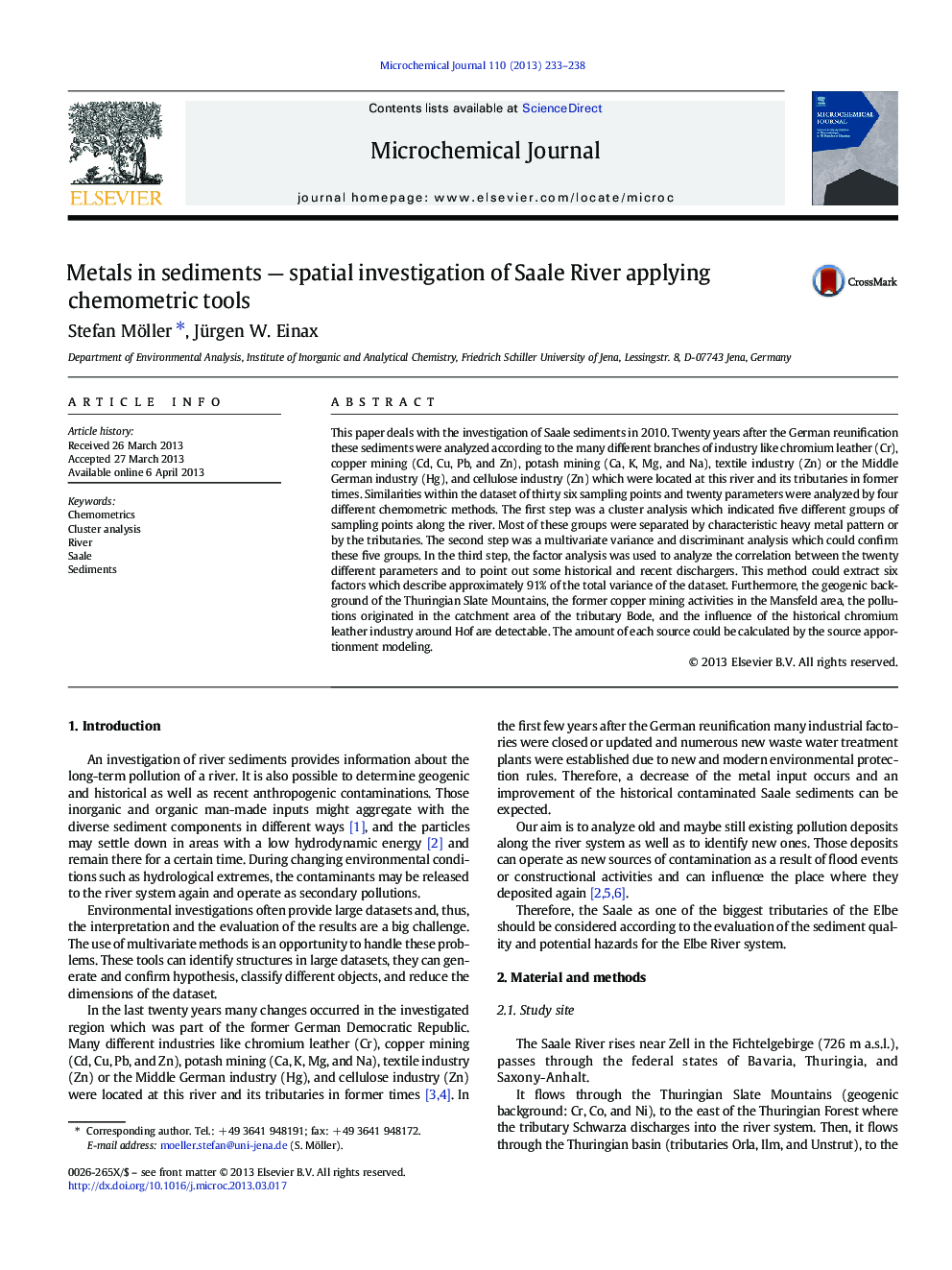| Article ID | Journal | Published Year | Pages | File Type |
|---|---|---|---|---|
| 7643697 | Microchemical Journal | 2013 | 6 Pages |
Abstract
This paper deals with the investigation of Saale sediments in 2010. Twenty years after the German reunification these sediments were analyzed according to the many different branches of industry like chromium leather (Cr), copper mining (Cd, Cu, Pb, and Zn), potash mining (Ca, K, Mg, and Na), textile industry (Zn) or the Middle German industry (Hg), and cellulose industry (Zn) which were located at this river and its tributaries in former times. Similarities within the dataset of thirty six sampling points and twenty parameters were analyzed by four different chemometric methods. The first step was a cluster analysis which indicated five different groups of sampling points along the river. Most of these groups were separated by characteristic heavy metal pattern or by the tributaries. The second step was a multivariate variance and discriminant analysis which could confirm these five groups. In the third step, the factor analysis was used to analyze the correlation between the twenty different parameters and to point out some historical and recent dischargers. This method could extract six factors which describe approximately 91% of the total variance of the dataset. Furthermore, the geogenic background of the Thuringian Slate Mountains, the former copper mining activities in the Mansfeld area, the pollutions originated in the catchment area of the tributary Bode, and the influence of the historical chromium leather industry around Hof are detectable. The amount of each source could be calculated by the source apportionment modeling.
Related Topics
Physical Sciences and Engineering
Chemistry
Analytical Chemistry
Authors
Stefan Möller, Jürgen W. Einax,
